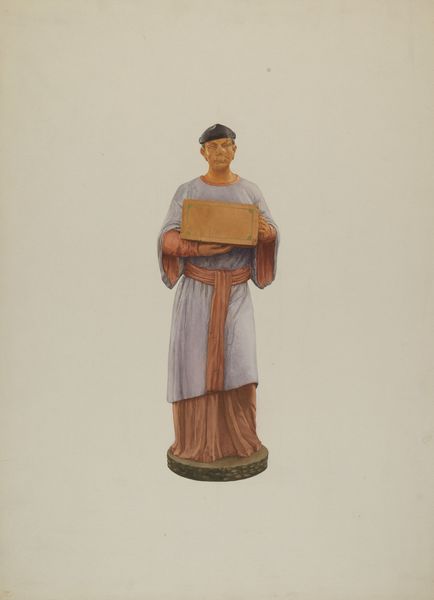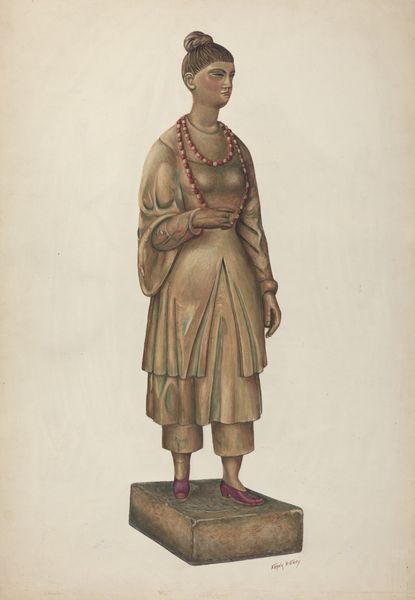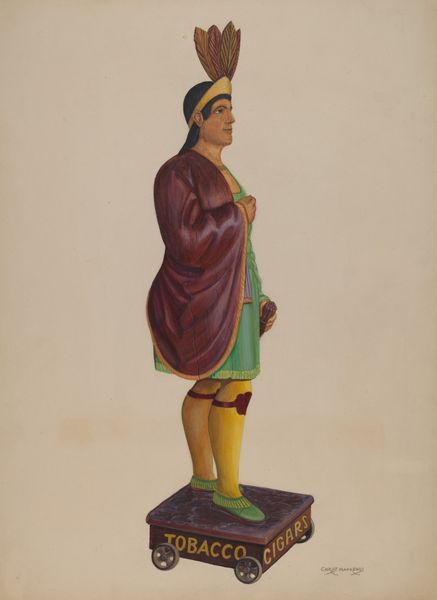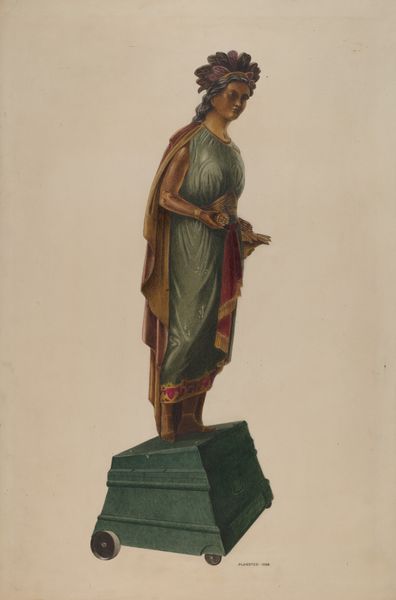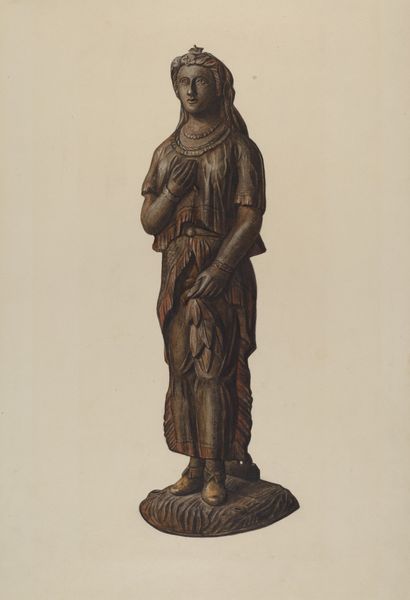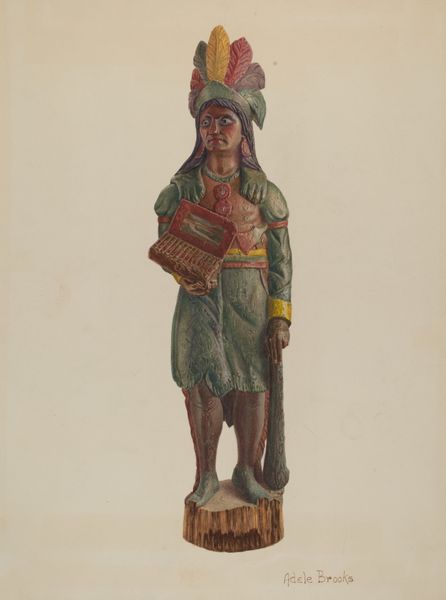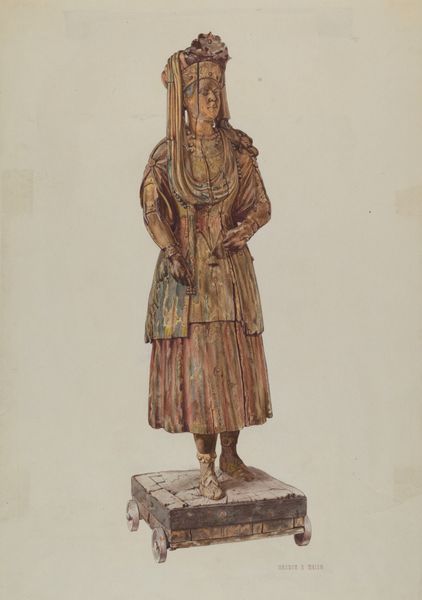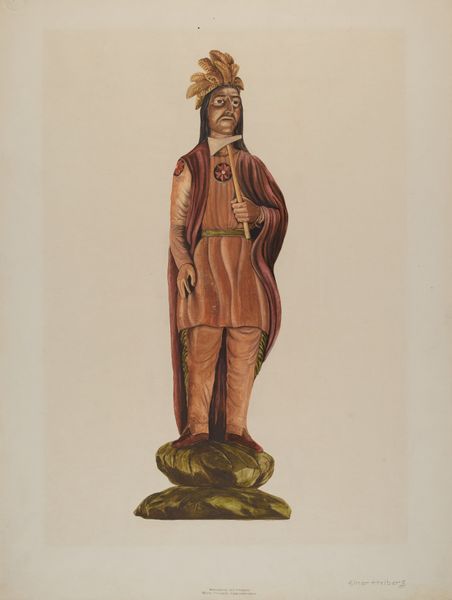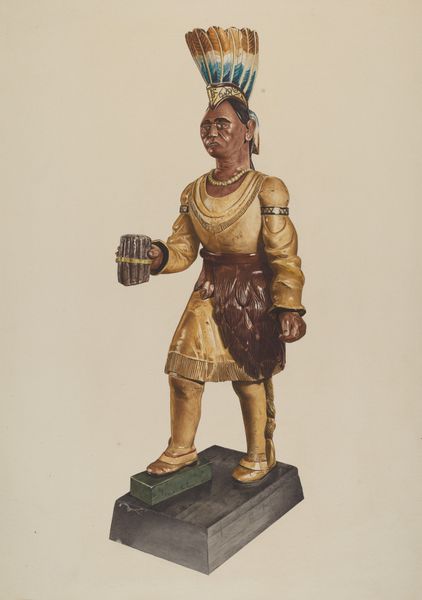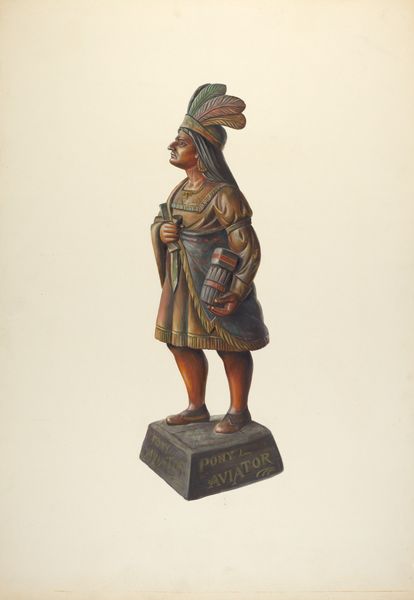
drawing, watercolor
#
portrait
#
drawing
#
caricature
#
figuration
#
watercolor
#
watercolor
#
realism
Dimensions: overall: 48.6 x 33 cm (19 1/8 x 13 in.)
Copyright: National Gallery of Art: CC0 1.0
Curator: This watercolor drawing from around 1938 is titled "Tea Store Figure." What's catching your eye about it? Editor: Initially, it feels a bit... constrained. There's this incredible stillness to her, almost like a posed doll. What kind of tea store figure are we talking about? The box looks too big and heavy to actually sell or use... Curator: That tension is what I find fascinating. We're looking at a drawing, likely created by John W. Kelleher, that walks the line between realism and something more symbolic. There's this kind of idealized representation, perhaps tinged with a caricature effect, where her slightly elongated features, are both dignified and subtly mocking. Editor: I see what you mean about the subtle mockery; her gaze is so steady, and with that barely-there smile...it complicates any straightforward interpretation. Given the timeframe, I immediately consider the gaze, her ethnicity, her attire; what did representation look like then and what kind of role did these images play at the time? Curator: Precisely! Kelleher uses watercolor so beautifully; the colors are muted, yet they lend this almost sculptural quality. Look at the play of light and shadow; especially how her dress is rendered—it is just marvelous! I'm really drawn to her solemn expression—as if there's more behind her posture, something weighing heavily on her mind that transcends selling tea. Editor: And that box, practically glowing, pulls our focus and amplifies that reading. What's inside? And who benefits from her labor? Her gaze suggests a consciousness of those imbalances, perhaps pointing towards the unseen forces structuring her reality. Is that package metaphorical in the face of American anxieties? Curator: Or the more concrete and immediate needs of her community during that period! Maybe this work can serve as a gentle reminder of both the complexities of representation. How it shifts over time and can transform in the process and prompt dialogues we otherwise might not even see. Editor: It truly does—opening up multiple lines of inquiry; leaving us to consider not just the subject, but the act of seeing, itself.
Comments
No comments
Be the first to comment and join the conversation on the ultimate creative platform.
